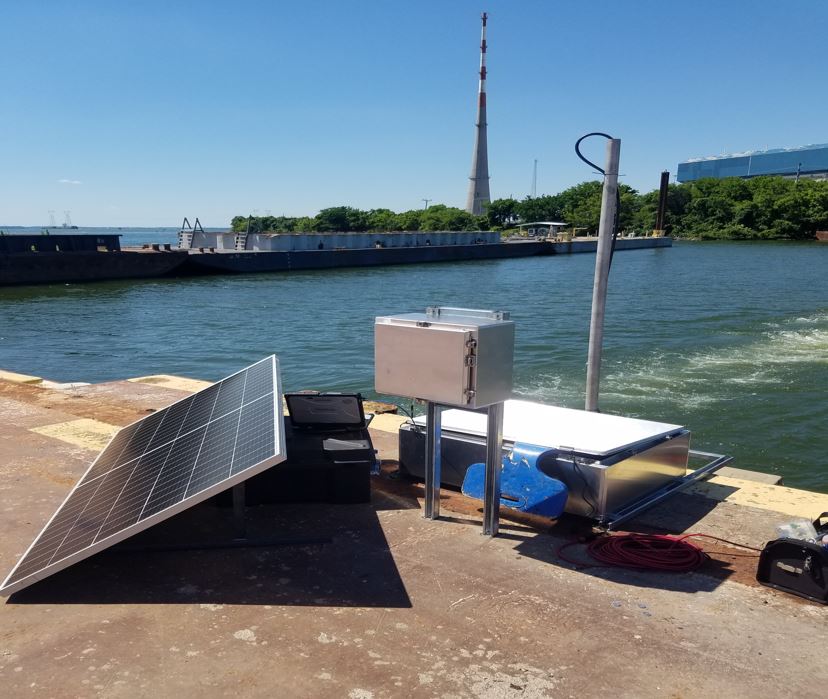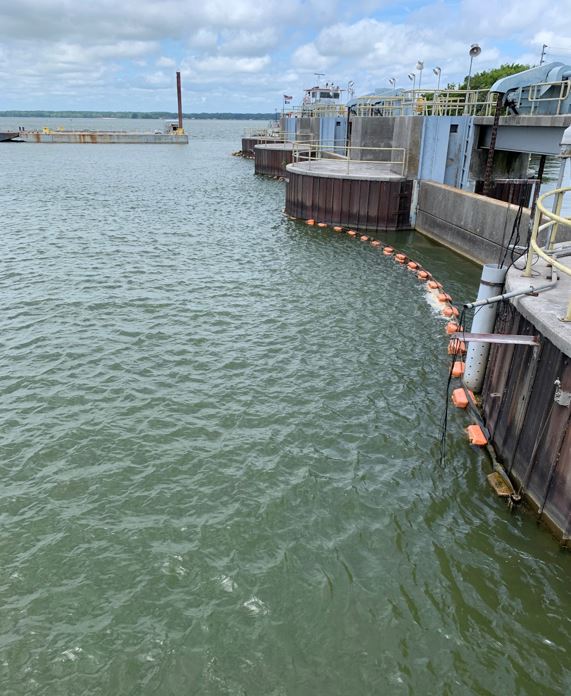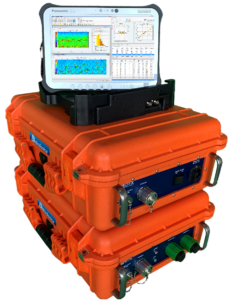Early sonar detection helps major nuclear power plant avoid drifting vegetation events and optimize Plant operations.
 Browns Ferry Nuclear Power Plant located on the Tennessee River near Athens, Alabama is the second largest nuclear power plant in the United States, producing 4,000 megawatts of electricity. Operated by the federal entity the Tennessee Valley Authority (TVA), Browns Ferry is TVA’s first and largest nuclear power plant, with three boiling water reactors producing about 20 percent of TVA’s total generation capacity.
Browns Ferry Nuclear Power Plant located on the Tennessee River near Athens, Alabama is the second largest nuclear power plant in the United States, producing 4,000 megawatts of electricity. Operated by the federal entity the Tennessee Valley Authority (TVA), Browns Ferry is TVA’s first and largest nuclear power plant, with three boiling water reactors producing about 20 percent of TVA’s total generation capacity.
The Plant’s cooling water intake uses 5,000 cubic feet per second of Tennessee River water a day, about 2.5 billion gallons. The cooling water intakes can be clogged by large amounts of drifting vegetation and one such event occurred in 2020 — forcing an emergency shutdown of the power plant. With the goal to optimize the cooling water intake of the power plant, predict major drifting vegetation events, and avoid future shutdowns, the TVA approached BioSonics for a solution. BioSonics conducted on-site field tests to determine if drifting vegetation could be detected and quantified by sonar technology. It was concluded that because the vegetation was distributed throughout the water column, it could be tracked with strategically placed sensors.
Detecting Drifting Vegetation
 BioSonics DT-X Automated Monitoring Systems were installed at key monitoring sites up-stream from the Plant. The split beam transducers at each site are strategically aimed across the river and configured to automatically detect and quantify drifting vegetation in real time. Automated summary reports of relative drifting vegetation abundance (0-10) from each monitoring site are transmitted every five minutes over a cell modem to a central control computer. These reports help plant operators forecast the timing and magnitude of future drifting vegetation events, allowing time for mitigation efforts to be accomplished to minimize negative impacts at cooling water intakes.
BioSonics DT-X Automated Monitoring Systems were installed at key monitoring sites up-stream from the Plant. The split beam transducers at each site are strategically aimed across the river and configured to automatically detect and quantify drifting vegetation in real time. Automated summary reports of relative drifting vegetation abundance (0-10) from each monitoring site are transmitted every five minutes over a cell modem to a central control computer. These reports help plant operators forecast the timing and magnitude of future drifting vegetation events, allowing time for mitigation efforts to be accomplished to minimize negative impacts at cooling water intakes.
Classifiers used to identify drifting vegetation:
- Speed
- Direction of travel
- Sonar target strength (dB)
- Grouping density
- Grouping length and width
- Phase coherence
